
No matter where I travel, I always meet Peace Corps volunteers. A few years ago, I met Jessie Beck in Thailand when she was on vacation from her positon as a Peace Corps volunteer in Madagascar. Jessie gives us all the details and tips for life in the international service organization run by the U.S. government.
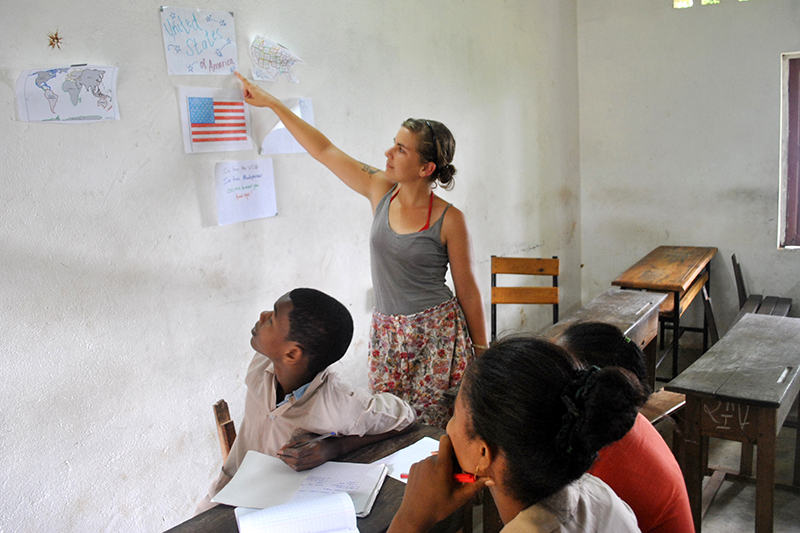
Jessie Beck spent 27 months teaching English in a small village called Antanifotsy in Madagascar. (Photography courtesy of Jessie Beck.)
Name: Jessie Beck
Age: 27
Hometown: Arlington, Virginia (Currently based in San Francisco)
Country count: 30+
Blog/Website: beatnomad.com
1. How did you start traveling?
My parents took me on my first international trip when I was one to visit Paris for France’s bicentennial. I just happen to share a birthday with France, and I guess they thought it’d be cute. Growing up, my dad would always joke that I’d have to go back for my 100th birthday.
2. Tell us about your experience in Madagascar in the Peace Corps.
I joined the Peace Corps in 2011 and was there for the standard 27 months of service as an Education volunteer. This meant that I taught English in a public middle school in a small village called Antanifotsy (which means place of the white land) outside of Antsirabe (place of lots of salt). I was the only volunteer in my village, but there were three [volunteers] that lived in Antsirabe so I ended up going there most weekends.

Peace Corps volunteers work in three sectors: education, agriculture and health. (Photography courtesy of Jessie Beck.)
3. What were the main roles of Peace Corps volunteers in Madagascar?
Peace Corps actually shifted their focus halfway through my service. When I started, they had four sectors: education, health, environment, and small business development. About halfway through, however, a new mandate from Washington stated that countries should have no more than three sectors, so environment and small business development sort of merged into one agriculture sector.
4. How much vacation time did you have in the Peace Corps? Where did you travel?
Peace Corps may not pay well [scroll down for pay details], but they’re pretty generous with vacation. We get two days per month of service, with the ability to use them in advance of actually serving the months for which we accrued vacation days. All in all, that means we had about 52 days throughout our service to play with.
One caveat: Technically, we’re “working” seven days a week, 365 days per year. So, vacation days had to be used to travel on weekends. Most volunteers got away with not taking vacation days for weekend trips in country (we could also travel to a nearby town for “banking purposes”), but if we went abroad, we had to use them. Basically, we were supposed to use vacation for every day that we weren’t “at site.”
Madagascar is both huge and isolated (I know it doesn’t look it on the map, but that’s probably because it’s next to Africa — also huge) so most of my trips were within the country. There’s so much to explore there—the natural parks like Andringitra, Isalo, and Ranomafana being the biggest highlights—and even though I traveled frequently, I still missed a few spots.
I also took two international trips: one to Thailand (where I met Anna!) and one to Reunion, a nearby French territory that’s one of the most amazing destinations I’ve ever been to. Seriously, it’s the perfect place for anyone who loves adventure travel, tropical fruit and a cafe where you can find a good espresso.
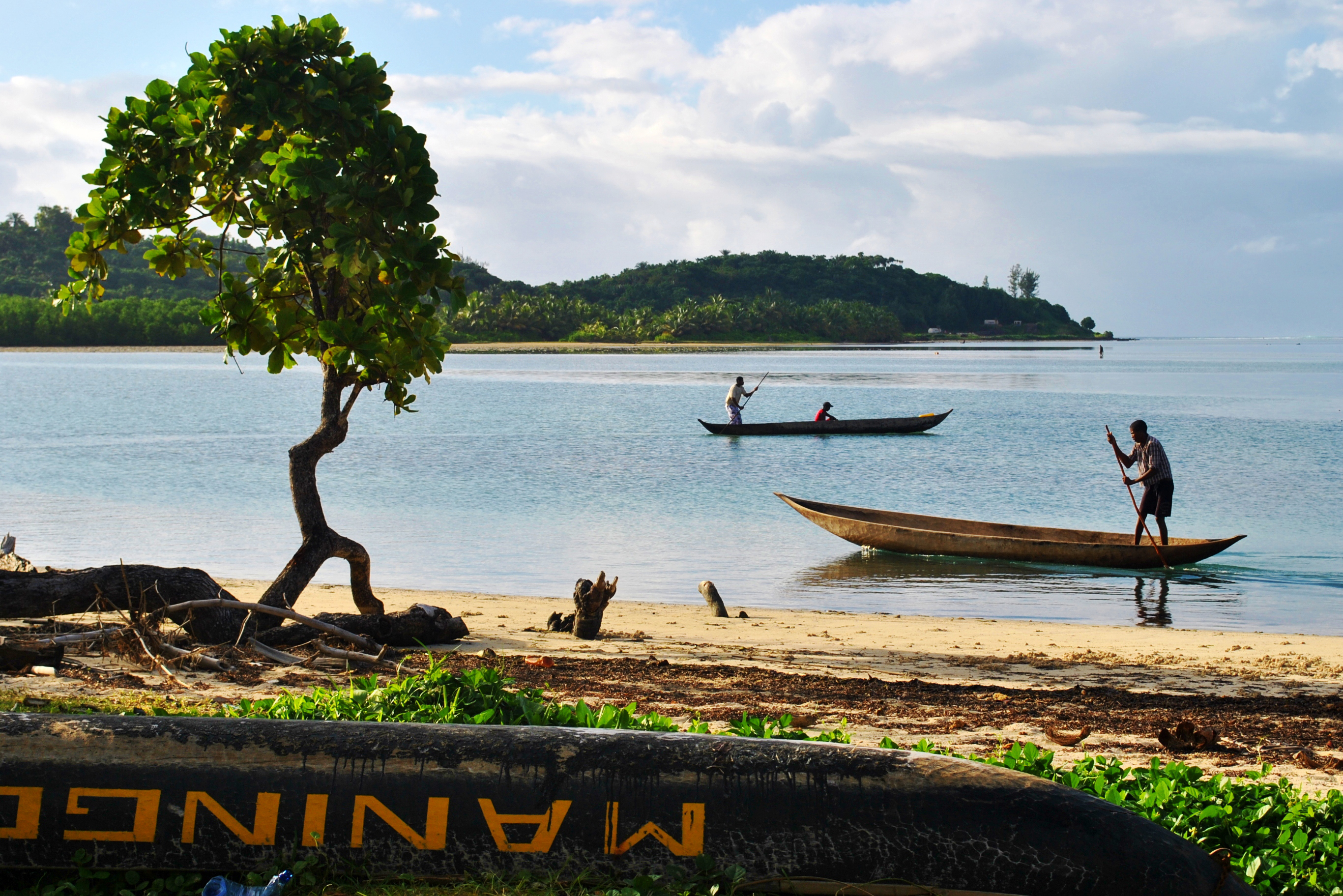
Ile Saint Marie was one of Jessie’s favorite spots in Madagascar. (All photographs courtesy of Jessie Beck)
5. Share one of your travel highlights.
About halfway through my service, a fellow PCV (Peace Corps Volunteer) and I were biking around Ile Saint Marie when a tropical downpour sent us running for cover. We ended up in this tiny three-room hotel and ordered coffee.
We were the only ones there, and the rain wouldn’t stop so after awhile my friend got to chatting with the owner, a middle-aged Malagasy woman, and I was talking with her daughter. Within an hour, the daughter and I were goofing off and watching cartoons while the mom and my friend were gossiping and pulling apart cassava leaves to make lunch.
I had several moments like these, and these fast and warm friendships really made me appreciate getting to serve in Madagascar. It’s this idea of “mandrosoa” or welcoming/inviting in that I always loved most about Malagasy culture—even if a lot of locals lamented about how it wasn’t as strong as the old days.
6. What was your greatest struggle and how did you overcome it?
Fear of missing out and not feeling like a real 20-something. While my friends at home were dating, getting careers, working out at the gym and going out to dinners/concerts/drinks, I was sitting in a dusty village cafe chatting about how it’s a great day to do laundry. Sometimes, the slowness could be tedious and made me feel older than I was.
I tried to cope by seeing other volunteers often, working out with videos, and eventually with distance cycling, but when I got home, I was definitely excited to do all of those little everyday things we take for granted like going on a date or taking a yoga class.
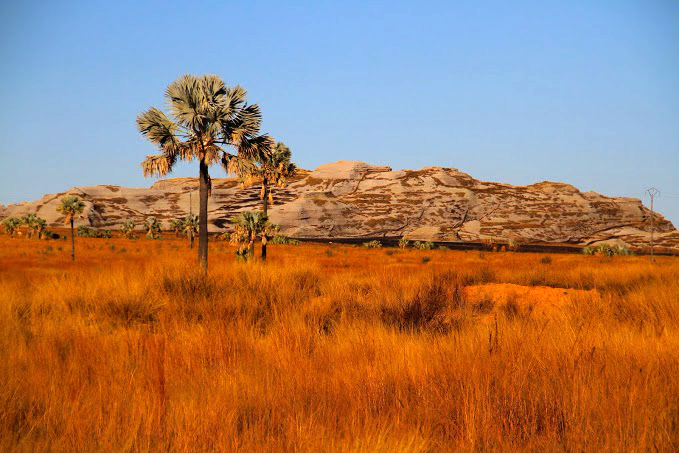
Isalo National Park is one of the many places Jessie visited during her time in Peace Corps.
7. What is the biggest benefit of joining the Peace Corps? What type of person should join?
There’s lots: you can grow, have adventures, learn a new language and be in a place long enough to truly understand it and bring that understanding back home with you. However, one of my biggest motivations for joining was the alumni network. PCVs are such a tight knit group of people and a wonderful network to be a part of!
However, if you’re not cut out for it, there’s the risk of doing more harm than good. Definitely join because you want to do Peace Corps, not because you don’t know what else to do with your life. Be committed to the organization, but simultaneously flexible and willing to adapt to whatever comes your way!
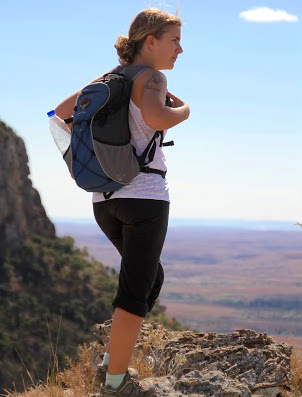
Jessie hiking in Isalo National Park, Madagascar.
8. What advice would you have for aspiring solo travelers? Any tips for overcoming fear?
I guess my biggest tip is:
The reality of traveling solo is never as scary as it seems and neither is making friends.
9. Name three things you always pack for a trip.
A collapsible water bottle (the Platypus), a bar of soap (so I can hand wash clothes if necessary), and one outfit/top I feel cute in.
10. What is your next adventure?
Hopefully, biking through Sweden with the boyfriend this summer! I can’t wait to experience a place that has 24 hours of sunshine!
********************************************
PEACE CORPS Details
HOW LONG: 27 Months
PAY & BENEFITS: During the time of service, volunteers receive a stipend for housing/food costs. Health insurance is provided. Other benefits include foreign language training and student loan deferment/cancelation. After completing their service, volunteers are paid $8,000 pre tax to use as they wish. Other benefits are listed here.
Check out my recent post about working abroad for more opportunities!
********************************************
COMING UP:
In the next Travel Tuesday Interview, I talk with Cath McGuinness about how her family of four spent almost a year traveling around the world! Sign up below for more interviews from inspiring travelers!
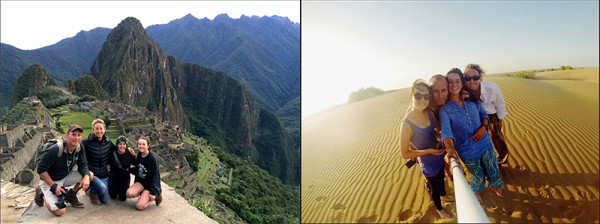
TRAVEL WITH ME:
Follow my summer travels on Instagram! Alfred the gnome and I are in the middle of a cross-country road trip!

